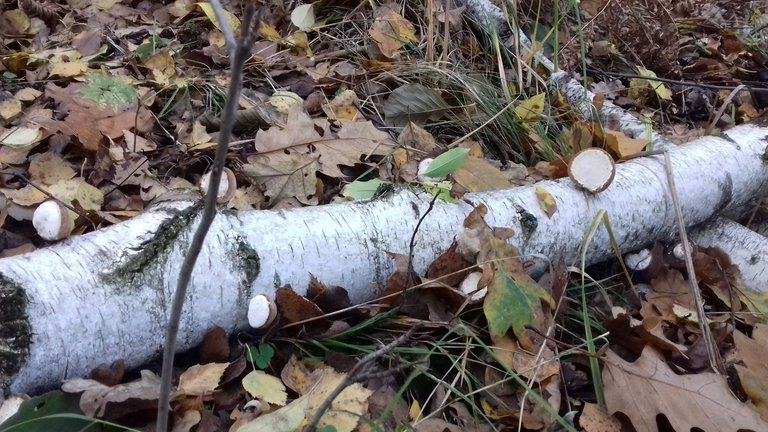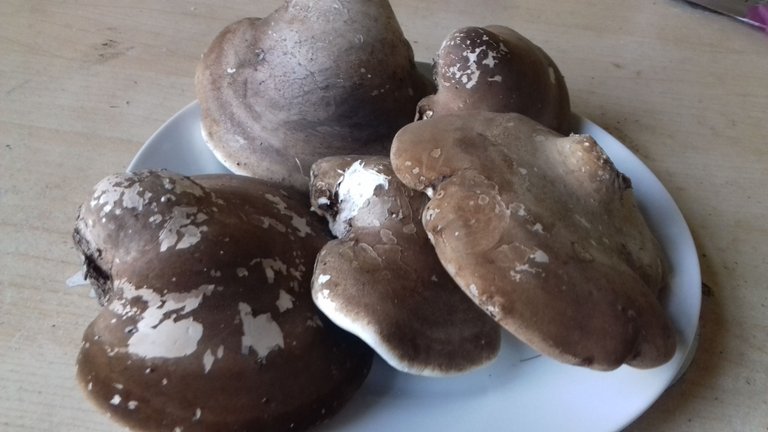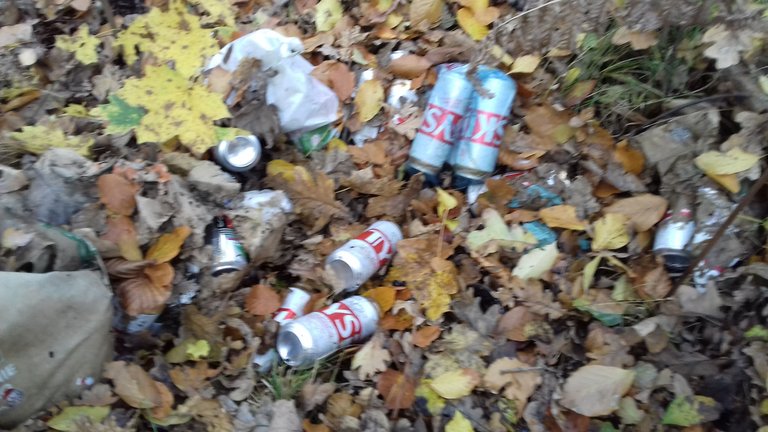Białoporek brzozowy - Fomitopsis betulina [POL/ENG]
19 września 1991 roku, podczas alpejskiej wycieczki, Helmut Simon wraz ze swoją żoną Eriką odkryli zakonserwowane przez lodowiec zwłoki. Ötzi - bo tak nazwano człowieka lodu - przeleżał w górach ponad 5000 lat. Ciało zachowane tak dobrze, że można było stwierdzić zarażenie boreliozą czy odtworzyć tatuaże pokrywające ciało człowieka. W kieszeniach Ötziego znaleziono natomiast m.in. huby z dwóch gatunków nawleczone na rzemień. Hubiak pospolity prawdopodbnie służył do rozpalania ognia, natomiast drugim z tych grzybów był białoporek brzozowy, zwany też pniarkiem brzozowym.


Nie jest to grzyb jadalny, a skoro już tak dawno ludzie przekonali się o jego wartości to coś w tym chyba jest. Rzeczywiście, współczesne badania naukowe wykazały działanie bakteriobójcze, przeciwzapalne, zwalczające pasożyty czy nawet hamujące wzrost komórek nowotworowych. Grzyb ten od wieków był też używany do ograniczania krwawienia z ran. Kto wie, być może dlatego miał go w kieszeni człowiek lodu? Mnie ten grzyb zainteresował ze względu na działanie wspomagające układ odpornościowy.
Korzystając z ostatnich dni wolnego udałem się dzisiaj do podkatowickiego lasu. Wiedziałem, że grzyb ten rośnie tylko na umierających lub rozkładających się brzozach, wybrałem więc okolicę, w której rosną te białe drzewa. Białoporek jest grzybek występującym powszechnie na całej półkuli północnej, najlepiej zbierać młode owocniki pojawiające się w lesie od sierpnia do października, później owocniki obumierają, jest to huba jednoroczna.


Grzyb ten jest bardzo łatwo rozpoznać. Od innych hub które spotkałem odróżnia go gładka powierzchnia kapelusza i względna miękkość. Przed wyjście obejrzałem kilka zdjęć w Internecie i gdy tylko zobaczyłem pierwszego białoporka w lesie nie miałem żadnych wątpliwości.
Podczas dwugodzinnego spaceru znalazłem kilkanaście owocników, z których zabrałem sobie 5 największych. Mniejsze zostawiłem, mamy wyjątkowo ciepłą jesień, możliwe więc, że jeszcze podrosną. Bardzo się jaram, że dorzuciłem nowy gatunek do listy grzybów, które potrafię rozpoznać i mogę swobodnie zbierać, tym bardziej, że to dopiero druga huba. Do tej pory prawie wszystkie grzyby rosnące na drzewach były dla mnie po prostu hubą.


Po powrocie do domu grzybki oczyściłem, pokroiłem w plastry i wrzuciłem do suszarki. Ponoć temperatura suszenia nie powinna przekraczać 70 stopni. Tak wysuszony grzyb umieszczę w szczelnie zamkniętym słoiku. Z białoporka można przyrządzić nalewkę lub odwar, ja celuję w tę drugą opcję. Grzyby należy gotować przez około godzinę, tak aby wszystkie cenne substancje zostały w wodzie. Taką miksturę mam zamiar pić 3 razy dziennie.


W roku 2020 masa wszystkich wytworów cywilizacji przekroczyła masę wszystkich żywych organizmów na Ziemi. Tymczasem masa śmieci w polskich lasach prawdopodobnie przekracza masę grzybów... Najgorsze są puszki po piwie, każdy pojemnik z niedopitymi resztkami przyciąga setki chrząszczy i ostatecznie staje się ich grobowcem. Jeśli mielibyście więc wybrać jeden tylko typ śmieci do podniesienia w lesie, to polecam puszki po piwie właśnie.


[ENG]
On September 19, 1991, during an alpine excursion, Helmut Simon and his wife Erika discovered the preserved remains of a man in the ice. They named him Ötzi, and he had been lying in the mountains for over 5,000 years. His body was so well-preserved that researchers could determine that he had been infected with Lyme disease and even recreate the tattoos covering his body. In Ötzi's pockets, they found, among other things, two types of fungi threaded onto a thong. The hoof fungus likely served for kindling fire, while the other fungus was the birch polypore, also known as the birch bracket fungus.


The birch polypore is not an edible mushroom, but since people discovered its value so long ago, there must be something to it. Indeed, modern scientific research has shown its bactericidal, anti-inflammatory, parasitic-fighting, and even cancer cell growth-inhibiting properties. From the other hand, this fungus has been used for centuries to control bleeding from wounds. Perhaps that's why the Iceman had it in his pocket? He died because of his wounds. I found this fungus interesting due to its immune system-supporting properties though.
Taking advantage of my last days off, I went to the forest near Katowice today. I knew this mushroom only grows on dying or decaying birch, so I chose an area with these white trees. The birch polypore is a small mushroom that is common in the entire northern hemisphere. It is best to collect young fruiting bodies that appear in the forest from August to October; later, they wither, as it is an annual fungus.


This mushroom is very easy to identify. What sets it apart from other polyphores I encountered is its smooth cap surface and relative softness. Before going out, I looked at a few pictures on the Internet, and as soon as I saw the first birch polypore in the forest, I had no doubts.
During a two-hour walk, I found several fruiting bodies, from which I took the five largest ones. I left the smaller ones behind because we have an unusually warm autumn, so they might still grow. I was really excited to add a new mushroom to the list of species I can recognize and pick. Even more because it's just second polyphore I'm familiar with.


Upon returning home, I cleaned the mushrooms, sliced them, and placed them in a dehydrator. Apparently, the drying temperature should not exceed 70 degrees Celsius. I will store the dried mushroom in an airtight jar. Birch polypore can be used to make a tincture or decoction, and I am aiming for the latter option. The mushrooms should be boiled for about an hour to ensure that all the valuable substances are retained in the water. This mixture is consumed three times a day.


In 2020, the combined mass of all human-made products exceeded the mass of all living organisms on Earth. Meanwhile, the amount of garbage in Polish forests likely surpasses the mass of mushrooms. The worst offenders are beer cans, as every container with unfinished contents attracts hundreds of beetles and eventually becomes their tomb. So, if you had to choose only one type of trash to pick up in the forest, I recommend beer cans.




Incredible stuff! Otzi's demise turned out very valuable for science and history. Is there any info on what caused his wounds? And are there any studies showing how this specific fungi was used those 1000s of years ago? Was it also turned into a tincture or decoction?
Yeah, it's amazing how much info can be retrieved from an ancient mummy!
What I managed to find is info, that he had measured doses of mushroom, which would indicate he used it for medicinal purpose.
https://www.thelancet.com/journals/lancet/article/PIIS0140-6736(05)79939-6/fulltext
He got shot with arrow in his shoulder. Scientists estimate it'd be fatal even with current medical treatment. There is more here:
https://en.wikipedia.org/wiki/%C3%96tzi#Cause_of_death
Very interesting read. Thanks for sharing the links.
Otzi died in battle, but went full metal and recovered his arrow after slaying two others with it. Wow.
The legal dispute over the finder's fee is also such an interesting modern twist to all of this.
A pleasure to walk with you, thanx for sharing. The post is supported by FL upvote. if you like what community is about, please add @hive-166168 as beneficiary of your future posts, or delegate to community -- lets grow together!
I didn't know the benefits of birch polypore and that it can be used in this way! I learned something from your post :))
A shame that there is more garbage than mushrooms in the Polish forests. Sad to see how we, as humans don't care. I imagine a dead body found 5,000 years from now, and a beer can in his pocket. 😣
Luckily future people will do some archeology search on-line too and they will find much more optimistic data about their ancestors on Hive 😁
Hahaha, that would be cool :)))
Nie zbieram, ale bardzo je lubię. Zawsze mają taki przyjemny kształt, ładny gradient koloru, żywo białą poduszeczkę od spodu. Sztywne, a jednak miękkie, jak dobry materac 😄
To prawda, bardzo sensorycznie przyjemne grzybki! Jak solidna bryła żółtego sera 😃
So you plan to use it 3 times a day preventively or just keep it for when a distinct need situation arises?
Preventively during winter months. My immune system needs some strenghtening even without infections :)
Congratulations @deepresearch! You have completed the following achievement on the Hive blockchain And have been rewarded with New badge(s)
Your next target is to reach 39000 upvotes.
You can view your badges on your board and compare yourself to others in the Ranking
If you no longer want to receive notifications, reply to this comment with the word
STOP